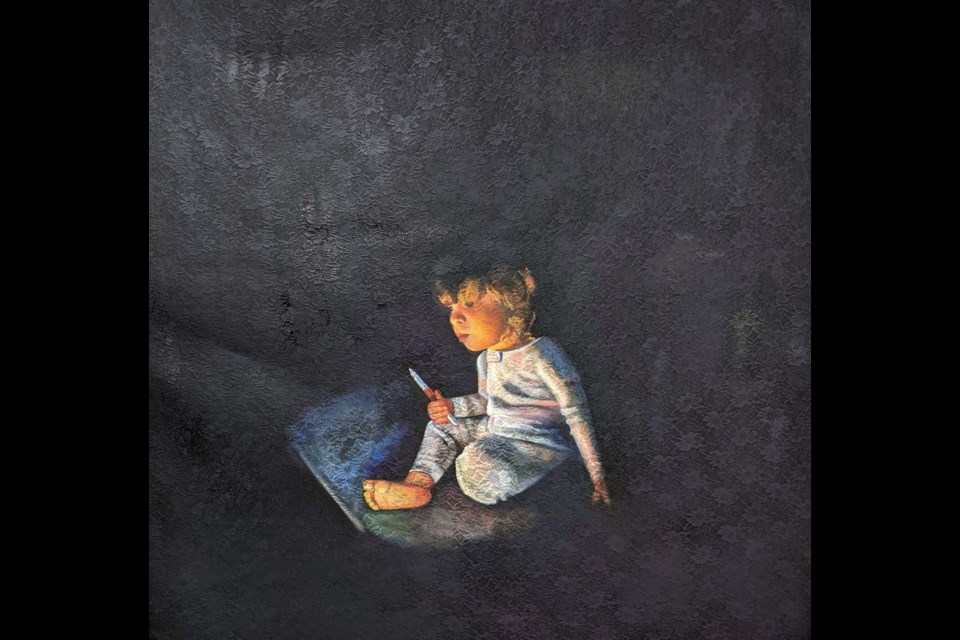Two decades ago, at the turn of the 21st century, it would have been almost impossible for artists to make the type of artwork now featured at the Art Gallery of St. Albert.
Inter Mundos, a new installation at the gallery that quietly opened last week, is breaking the physical mould blending digital art and hand-painted art. Virtual reality is a relatively new platform for showcasing art, yet one that is growing in importance.
As gallery curator Emily Baker explains the title Inter Mundos is a Latin word that translates roughly as “in between worlds.” It is a well-timed description of art that slides from the physical to a three-dimensional digital realm within the space of four walls.
Carving out a path in this new realm are three Alberta visual artists with diverse visions of digital art. While Megan Klak paints her vision of digital moments using lace and oil on canvas, Marilène Oliver and Daniel Evans dive into virtual reality.
Both Oliver and Evans' goal is to create context for people to view these works of art using digital means. Both artists combine a high-resolution screen with virtual reality masks where the viewer navigates their experience using hand controls.
Evans’ contribution is a digital video created from his own cell phone user data that is capable of tracking his movements even if the phone is turned off. Once a viewer puts the virtual reality mask on, they are free to travel in a body of water speckled with 1,800 islands.
“He exported his data and imported it into a computer program. The computer program translated the location data into a landscape and turned them into islands. Each island is a record of a day’s movements on that day. All the recorded data was turned into a series of code you can interact with, and he built the landscape as a way you can interact with the data,” said Baker.
As the viewer skims through the islands and dives into the watery underworld, an overdub of Scotland’s selkie legend is voiced. Selkies are shapeshifters transforming between seal and human form by shedding and replacing their skin.
“Dan likes the parallel to what is happening in the digital world. Selkies are very creative. They take off their skin and they can transform. But they can’t transform back without their skin. Someone is always trying to steal the selkie’s skin and selkies are often manipulated into certain actions.”
Oliver instead is an assistant professor of Fine Arts at the University of Alberta’s art and design program. She focuses on printmaking, sculpture, video and media arts. Her special field of interest is digital medical imaging and contemporary art.
“She’s interested in understanding the digital self and she’s based this work on laser cuts of her own body. She wants to investigate her body and see how much of a digital footprint she leaves behind,” Baker said.
In a virtual reality creation, Oliver uses MRI, CT and PET technology to simulate a medical simulation of her body that can be lifted, lowered and turned around while appearing to float in the air. She works with a body translated into data form in hopes of understanding what it has become in our increasingly digitized environment.
And Klak, although contemplating the digital work, has remained devoted to painting her figurative works with tactile materials. Her four paintings, created during the pandemic, reflect how individuals more than ever used digital tools to remain in contact with others.
“She uses a chiaroscuro technique she played with during the pandemic. All her figures are surrounded by darkness. The only light comes from a computer, a tablet or a phone.”
Inter Mundos runs until Jan. 27, 2024. An in-person tour is on Wednesday, Dec. 13 at noon.




